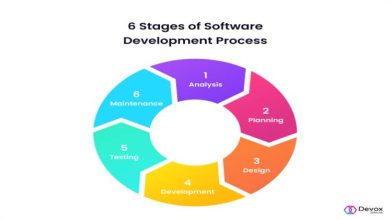Best Practices for Continuous Localization Management: Establishing Workflows, Quality Assurance Processes, and Metrics

Launching software, video games, and mobile or PC apps is the first step. The following steps in a successful business strategy include entering new markets and promoting your goods globally.
To expand your business, you must constantly enhance and update your product to correct bugs, add new features, and meet changing market demand. This means that you’ll have to generate and localize new material regularly.
Localization, or altering material for different languages and areas, has become essential to effective worldwide company strategies. Companies must build solid workflows, implement quality assurance processes, and use metrics to continuously measure and improve their localization efforts to manage the ongoing needs of translation efficiently.
Best Practices for Continuous Localization Management:
1. Creating Effective Localization Workflows
Efficient workflows are the foundation of effective continuous localization management. They ensure that information is correctly localized, timely, and within budget. The following are some best practices for developing and sustaining efficient localization workflows:
Content Preparation
- Internationalization (i18n): Before beginning continuous localization, ensure the source content is internationalized. Internationalization entails creating information that is easily adaptable to different languages and cultures. This involves correct encoding, support for character types, and code and content separation. Most definitions state that corporations must first internationalize before localizing a product.
- Content Management Systems (CMS): Use a CMS that allows localization. This allows you to organize information easily, track changes, and seamlessly work with translators and reviewers.
TMS (Translation Management System)
- Purchase a TMS: A Translation Management System makes the translation process more efficient. It improves communication among translators, project managers, and reviewers by automating repetitive activities and managing translation memory and terminology databases.
- Implementation: Integrate your TMS with other tools in your tech stack, such as version control systems and content management systems, to ensure smooth data flow and reduce the need for manual intervention.
Project Management
- Define the Following Roles and Responsibilities: Define the roles of translators, reviewers, project managers, and localization engineers as clearly as possible. This assures responsibility and aids in the speedy resolution of difficulties.
- Create a Localization Style Guide: Establish tone, style, and terminology rules to ensure language consistency.
- Content Squeezing: Divide text into digestible segments for parallel translation and review.
Continuous Feedback Loops
- Regular Meetings: Schedule regular meetings to discuss progress, address difficulties, and make required workflow improvements.
- The Process of Feedback: Encourage translators and reviewers to provide comments on any problems they encounter while working on the localization. Utilize this feedback to improve processes and fine-tune the style guide.
2. Implementation of Quality Assurance Processes
The ability to maintain the quality of localized content is critical to the success of any localization endeavor. Quality assurance techniques ensure that the localized material complies with linguistic standards and resonates with the intended audience. The following are critical quality assurance practices:
Linguistic Quality Assurance (LQA)
- In-Country Review (ICR): Conduct in-country assessments in which native speakers assess the language and cultural appropriateness of the localized content.
- Termbase and Translation Memory: Use terminology databases and memory to ensure translation consistency.
Functional Testing
- UI and UX Testing: Ensure the localized interface is still usable and functional.
- Functional Testing: Ensure localized software or apps work as intended across many languages and regions.
Automation
- Automated Testing: Use automated testing scripts to discover problems such as text overflow, truncation, or formatting flaws.
- Localization Testing Tools: Use localization testing tools to detect and address localization-specific errors easily.
Feedback Loop
- Continuous Improvement: Gather feedback from in-country reviewers and end-users to solve recurring issues and improve the localization process.
3. Using Metrics to Measure and Optimize Localization
You must set key performance indicators (KPIs) and metrics to monitor the efficacy of your procedures to enhance your localization efforts continuously. Metrics allow data-driven decision-making by providing actionable insights. Here are some key metrics for localization:
Translation Quality Metrics
- Translation Quality Score: Rate translation quality using factors such as correctness, fluency, and style guide conformance.
- Density of Errors: To discover areas for improvement, count the number of mistakes per word or segment.
Efficiency Metrics
- Turnaround Time: Monitor the speed with which material is localized from submission to final delivery.
- Cost Per Word: To optimize budget allocation, calculate the cost of localization per word or unit of content.
Terminology Consistency Metrics
- Terminology Consistency: Assess how consistently terminology is utilized across languages.
- Rate of Concordance: Calculate the percentage of translation memory content that can be reused.
User Engagement Metrics
- The Impact of Localization: Comparing user engagement, conversion rates, and user satisfaction in localized and non-localized marketplaces
- Customer Support Requests: Check to see if localized material decreases customer support questions about language challenges.
Feedback Metrics
- Feedback from In-Country Reviewers: Compile feedback from in-country reviewers to identify recurring issues and opportunities for improvement.
- Translator and Reviewer Comments: Encourage your translation team to provide input on the quality of the source content and the localization process.
The Future of Continuous Localization
While continuous localization has significant global reach and user satisfaction advantages, it is not without challenges. Businesses must carefully plan and invest in the appropriate resources, technology, and processes to overcome these hurdles and reap the benefits of a successful continuous localization strategy.
Continuous localization management is a dynamic and complex activity requiring careful planning, efficient workflows, stringent quality assurance methods, and metrics-driven decision-making. Businesses can not only meet the expectations of varied worldwide markets by applying these best practices but also gain a competitive advantage by delivering high-quality localized content efficiently and effectively. Without a doubt, localization is a continuous commitment to providing a uniform and engaging experience to people globally.
Businesses that use the advice and suggestions of industry professionals can successfully handle the complex localization process, opening up new potential for global involvement and expansion.





